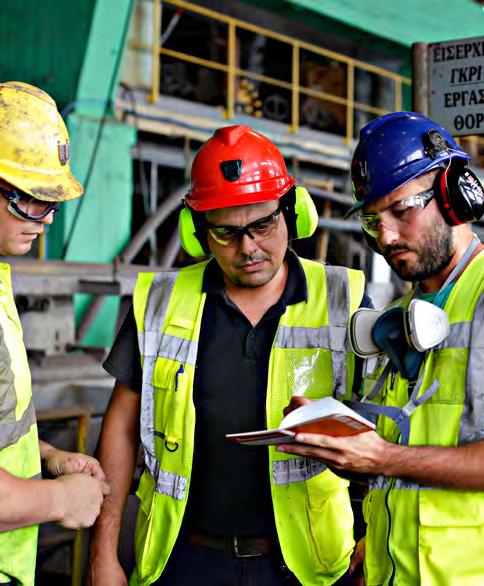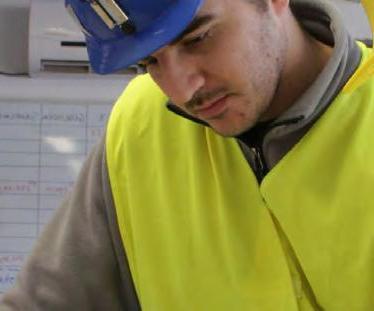2 minute read
7. Noise & Vibrations
• Hazardous waste: Identification forms with data including collection site, ECHA (European Waste Catalogue) number and waste volumes, shipping notes from our warehouse and certificates of final management (deposit, recovery etc.). We consider the following types of waste as hazardous: - Hazardous tailings - Neutralisation sludge - Industrial waste (e.g. used oil, chemical reagents remnants, workshops waste such as oil filters and brake fluids, filter clothes polluted with tailings) - Medical waste. • Non-hazardous waste: Shipping notes from our warehouse and recycling certificates from waste management companies. Mine Tailings: We reuse mine tailings to backfill mined out areas of our sites, mixing them with cement. Waste Rock: All our sites use waste rock as construction material for new project development. For example, we have used waste rock to build dams at the Kokkinolakkas Tailings Management Facility and pave roads, which allows us to reduce surface waste facilities and reuse waste materials.
7.1%
increase in non-hazardous industrial waste composted
71.4% increase in hazardous industrial waste recovered 16.1% increase in non-hazardous extractive waste reused 191,193 tonnes of inert waste rock reused as construction material for dams and roads
122,826
tonnes of mining waste accumulated over the last 40 years removed
7 | Noise & Vibrations
Mining activities are expected to contribute to noise disturbance and vibrations in the surrounding environment, which is defined as any unwanted sound from construction and operation of mines (e.g. blasting, ore processing) that changes the noise levels in the area of operations.
Good Practice
Collaboration with Universities
We have ongoing collaborations with several universities to improve our environmental performance, such as: • The National Technical University of Athens’ School of Mining and Metallurgical Engineering • The National and Kapodistrian University of Athens’
School of Geology. These collaborations provide us with insights to contemporary research, innovation and emerging environmental management technology, and offer our partners mining expertise and operational knowledge with practical application on their research.
Monitoring noise
Noise can potentially have negative impact on our employees and contractors, as well as nearby communities. In order to ensure that we do not exceed noise limits, we monitor noise emissions in all mining facilities. Indicating our efforts to reduce noise pollution, during 2020 we adjusted operating hours of heavy noise machinery (e.g. mine ventilation fans).
Monitoring vibrations
Vibrations are unavoidable in mining activities, as they are a result of both explosions and digging activities. To manage potential impacts, we have installed a network of vibration monitoring stations at every settlement in the wider area of Kassandra Mines and accelerometers, which monitor and record any potential impact from activities that might generate ground movement.
0
cases of noise and vibrations exceeding instantaneous, hourly or regulatory limits








